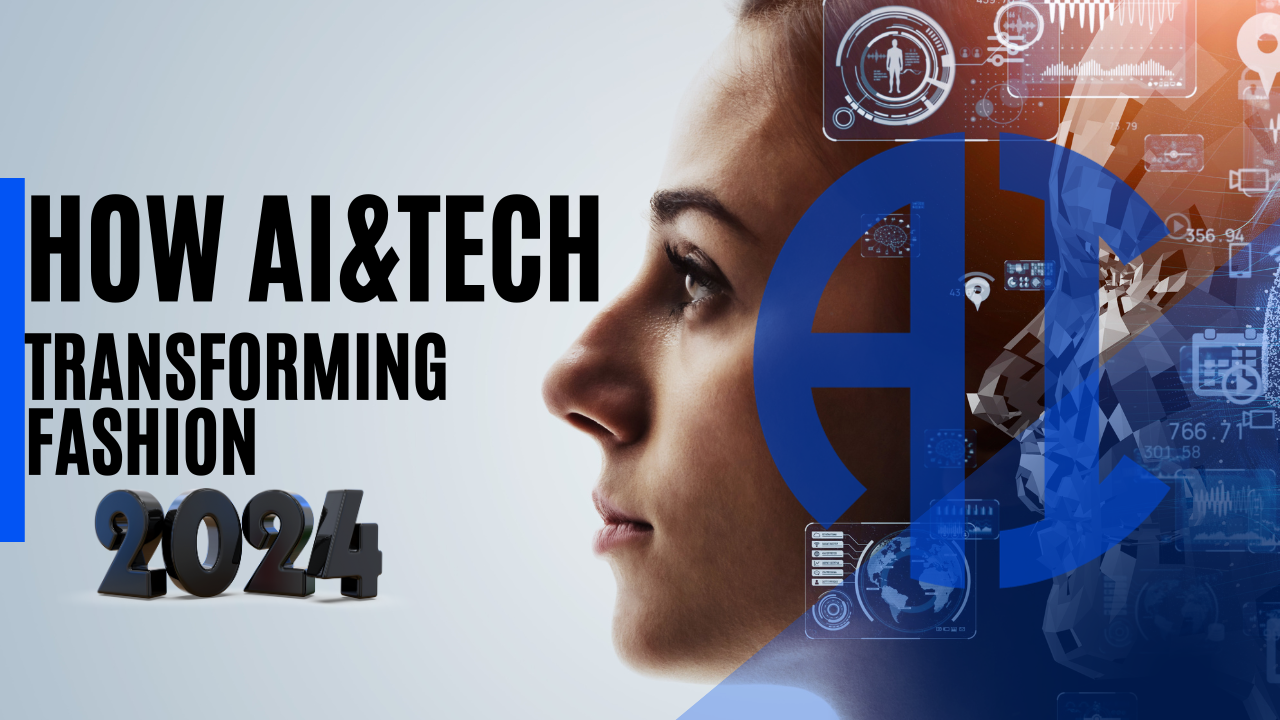How AI is Transforming Fashion in 2024
Introduction: The Fashion Tech Revolution
In the dynamic world of transforming fashion, 2023 witnessed a transformative wave of technological innovations. AI and blockchain, once considered mere extras, have now become pivotal forces reshaping the entire fashion landscape. This article helps in the key ways technology is revolutionizing the fashion industry, exploring the futuristic impacts of AI and tech on fashion design, styling, authentication, digital wearables, retail, and leadership roles.
1. AI Fashion Designers: A Virtual Wave of Creativity
In 2023, AI has transcended conventional roles, influencing fashion design. Brands leverage technologies like ChatGPT and Runway to generate novel designs, allowing human designers to explore unconventional styles rapidly. The collaborative efforts of humans and AI result in the creation of fresh collections of art and an unlimited team of virtual assistants.
2. AI Stylists In Your Phone: Revolutionizing Shopping Experiences
AI isn’t just confined to design; it extends its influence to shopping experiences. Mobile apps equipped with AI analyze users’ camera rolls, providing personalized outfit suggestions or identifying celebrity fashion items with direct purchase links. Virtual models showcasing digital versions of real clothes add a futuristic touch to online shopping, allowing consumers to visualize products on diverse body types.
3. Ensuring Authenticity: AI as Fashion Detectives
Fashion labels turn to AI for assistance. Luxury brands like LVMH are developing AI systems to inspect and certify the authenticity of items. These systems utilize microscopic details imperceptible to the human eye, such as stitch patterns, to identify counterfeit products. The integration of digital fingerprints and codes further aids in tracking the origin of fashion items.
4. NFTs and Digital Clothing: The Intersection of Fashion and Blockchain
Digital goods, especially NFTs and virtual wearables, find a place in the fashion realm. Despite a cooling interest in NFTs, some brands, like Nike, are exploring the creation of playable sports gear for video games that can be purchased with cryptocurrency. Virtual fashion emerges as a sustainable option, reducing material consumption and aligning with the growing presence of digital lives in metaverse spaces.
5. New Stores Tech: RFID and Smart Cubes
Physical stores undergo technological upgrades with the introduction of RFID tags. These tags enable efficient inventory tracking, and some stores even employ smart cubes that automate the checkout process by detecting RFID codes as customers leave. These advancements streamline the shopping experience, aligning with the fast-paced nature of the tech-driven era.
6. Fashion Business Gets Digital: The Rise of Chief Digital Officers
As technology develops every aspect of the fashion industry, companies recognize the need for dedicated leadership in digital strategy. New roles like Chief Digital Officer are emerging to oversee AI, VR, blockchain, and other tech initiatives. This shift signifies a departure from compartmentalized tech projects, emphasizing a cohesive digital vision at the executive level.
7. Why Now? The Catalysts Behind the Tech Boom in Transforming Fashion
The surge in fashion tech adoption can be attributed to various factors:
a) Recent advancements in capabilities.
b) Observing rapid tech adoption in other industries.
c) The digital preferences of new generations, particularly Gen Z.
d) The pandemic-driven acceleration, prompting brands to incorporate virtual options.
This convergence of circumstances has created the ideal environment to revolutionize traditional fashion operations.
8. Imagining Fashion’s High-Tech Future: A Fusion of Tradition and Innovation
Looking ahead, the marriage of fashion and tech is set to deepen. AI assistants guide designers, supply chains embrace blockchain for transparency, and AR promotes inclusivity. This digital revolution aligns fashion with its pre-industrial roots, bringing back the personalized touch of tailoring. Despite potential risks like AI bias, the symbiosis of fashion and tech promises a greener, more ethical, and accessible industry.
Conclusion: A Radical Remaking of Fashion
In witnessing the radical remaking of the fashion industry, we find ourselves at the forefront of an exciting era. The fusion of tradition and innovation, coupled with a digital revolution, propels fashion into a greener and more sustainable future. As technology continues to evolve, the possibilities for fashion are limitless.
Read More
- 8 Best Tech Gadgets of 2023: Understanding the Future
- New Year 2024: Is 2024 a Leap Year? Unraveling the Mystery of Leap Days
FAQs:
- How is AI influencing fashion design?
- AI is revolutionizing fashion design by generating novel designs, allowing human designers to explore unconventional styles rapidly.
- What role does AI play in shopping experiences?
- AI enhances shopping experiences by analyzing users’ camera rolls, providing personalized outfit suggestions, and identifying celebrity fashion items with direct purchase links.
- How does AI contribute to ensuring the authenticity of fashion items?
- AI acts as a fashion detective, inspecting and certifying the authenticity of items by identifying microscopic details imperceptible to the human eye.
- What is the intersection of fashion and blockchain technology?
- Fashion and blockchain intersect through the creation of digital goods, including NFTs and virtual wearables, offering sustainable options for the industry.
- Why has there been a recent surge in fashion tech adoption?
- The surge in fashion tech adoption is driven by recent technological advancements, observations of tech adoption in other industries, the digital preferences of new generations, and the pandemic-driven acceleration.

